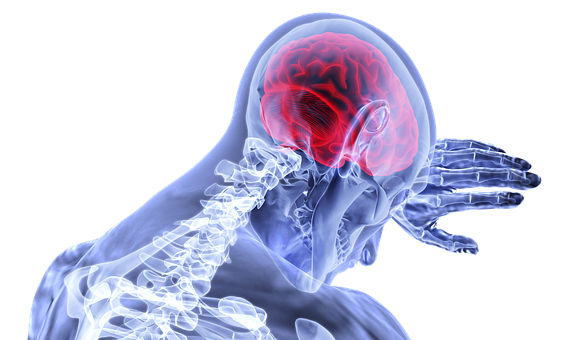Pain and Excoriation Disorder
Online test
Find out the severity of your symptoms with this free online test

One of the questions asked of those who struggle with compulsive skin picking is, “doesn’t it hurt?” Despite all the research available on excoriation disorder, none examined the pain thresholds of people who compulsively pick at their skin, until recently.
What is Excoriation Disorder?
Excoriation disorder is a body-focused repetitive behavior where people compulsively pick at their skin to the point of doing extensive damage. Sometimes picking starts to rid oneself of blemishes and imperfections, while other times it serves as a self-soothing behavior. The triggers are different for each person, and the cause is unknown. Most people spend a significant amount of time picking, sometimes hours per day. Also, many hours go into covering up wounds and caring for damaged skin. The stigma attached to this disorder leads to significant psychosocial impairment, and many with this disorder end up with co-occurring mental health problems.
The Experience of Pain of Compulsive Skin Pickers
The research question at the heart of a recent study was whether people who pick at their skin for hours felt less pain allowing them to continue to the point of significant damage. Not only is there pain during picking episodes, but there is also pain following based on the severity of skin damage and whether the skin becomes infected. To test pain levels and compare them to a control group, researchers used a cold pressor test. The test involves a participant placing their open hand in a container of water chilled to just above freezing. Previous research indicates this test activates the pain response similar to an injury. While the participant’s hand is in the water, they rate their pain every 15 seconds, and their heart rate and blood pressure were monitored simultaneously. When pain increases, both heart rate and blood pressure increase.

Compulsive Skin Picking Dampened Autonomic Response to Pain
Researchers thought those with skin picking disorder would have less of pain response to the cold pressor test than a control group without the disorder. The study confirmed their hypothesis, meaning those with skin picking disorder showed a dampened autonomic response to pain during the test. However, the pain perception ratings were similar between the two groups. Therefore highlighting a discrepancy in the way people with skin picking disorder perceive and experience pain. The authors of the study concluded that picking behaviors desensitize people to pain, therefore, they do not have a strong autonomic response to it, but they still perceive it and feel it. Some people who pick at their skin do so to self-soothe. The pain felt during an episode calms them, thereby slowing their heart rate and lowering blood pressure.
This study provides only one small piece of the larger puzzle and invites more questions.
- Is someone with a decreased autonomic response to pain more likely to develop skin picking disorder?
- Does the lack of a pain response make it harder for someone to stop the behaviors?
- Does someone’s pain perception change over the whole body or is it localized to the part of the body that is the subject of picking?
- While providing some insight into skin picking disorder, there are more questions as a result.
The research suggest why most people continue to pick through pain
The good news about this research and the questions generated is that more focused research can be done which will eventually lead to more effective treatment methods. While this research looked at the pain response, it did not separate the participants based on the type of skin picking disorder they had. As mentioned previously, some people pick as a way to soothe themselves, while others pick without even realizing until they hurt themselves. Adjusting treatment to help people pay attention to their pain response would be more beneficial to those with automatic behaviors and not so much for those who use them for soothing.
The authors concluded there is a disconnect between the autonomic pain response and the cognitive perception of pain in people who compulsively pick at their skin. It may explain why behaviors continue even when it hurts, but it may also drive treatment strategies. If that disconnect can be bridged, perhaps people can recover faster.
Reference
Grant, J. E., Redden, S. A., & Chamberlain, S. R. (2017). Cold pressor pain in skin picking disorder. Psychiatry Research, 249, 35–38. http://doi.org/10.1016/j.psychres.2016.12.050 https://www.ncbi.nlm.nih.gov/pmc/articles/PMC5345741/
Online test
Find out the severity of your symptoms with this free online test
Start your journey with SkinPick
Take control of your life and find freedom from skin picking through professional therapy and evidence-based behavioral techniques.
Start Now



